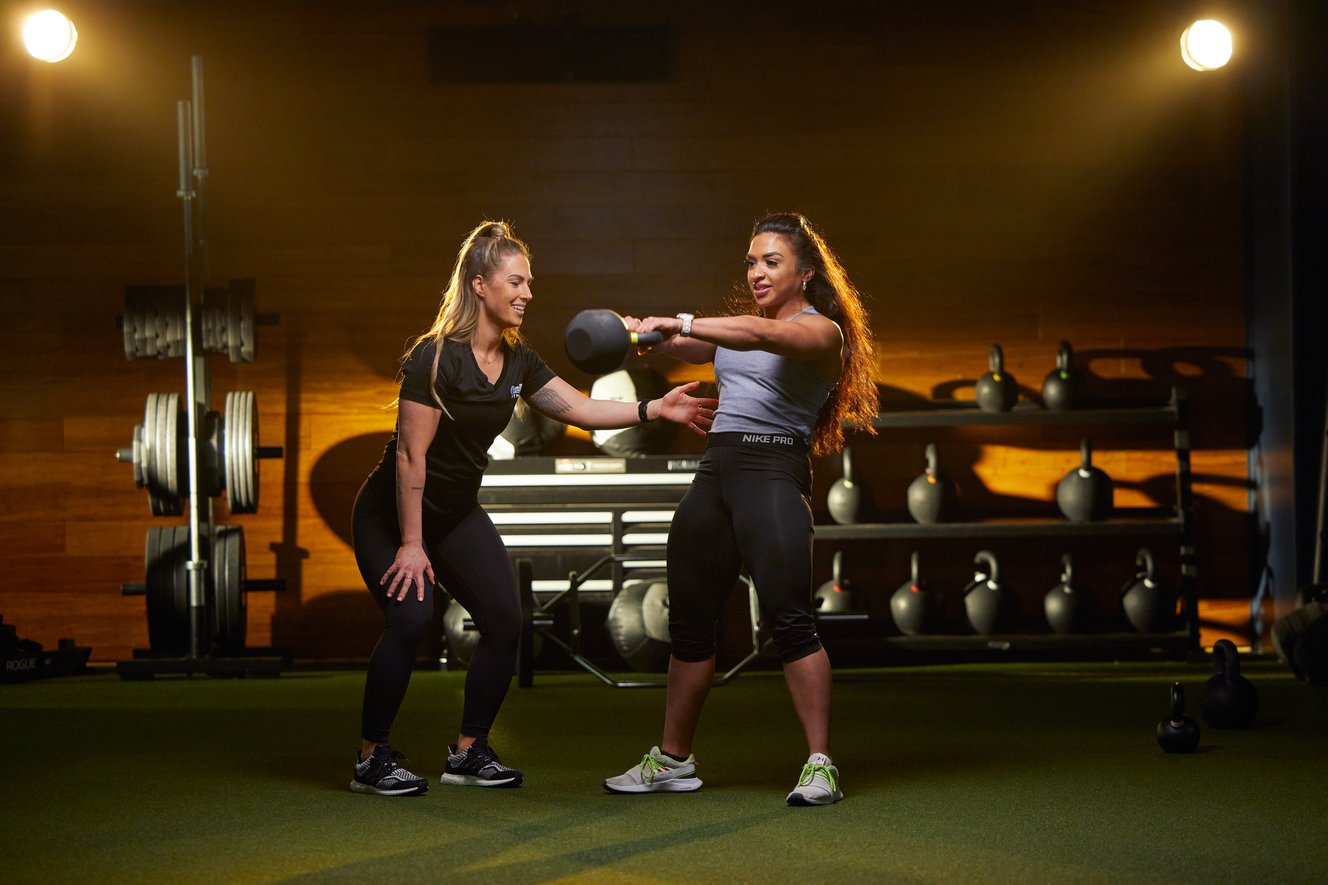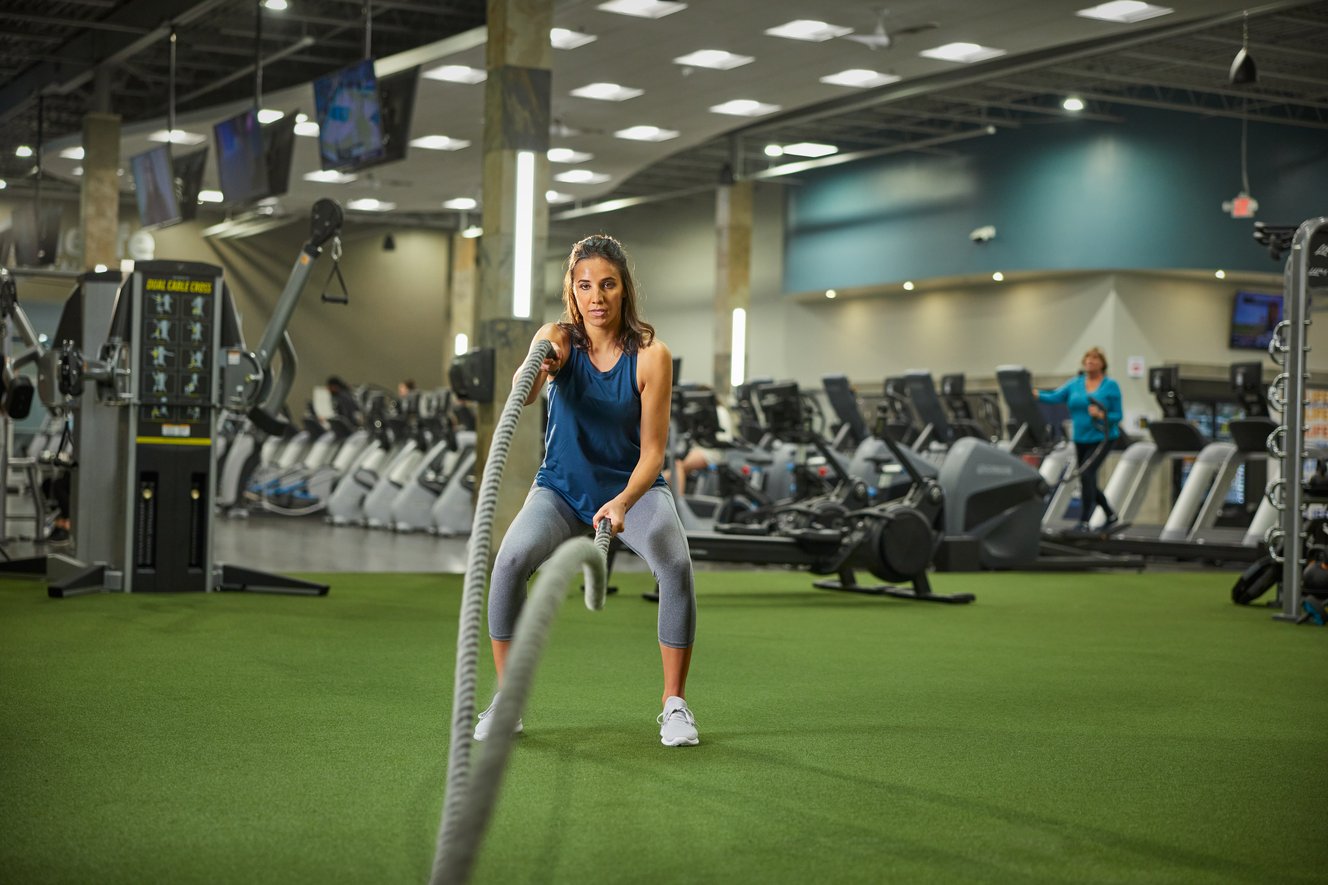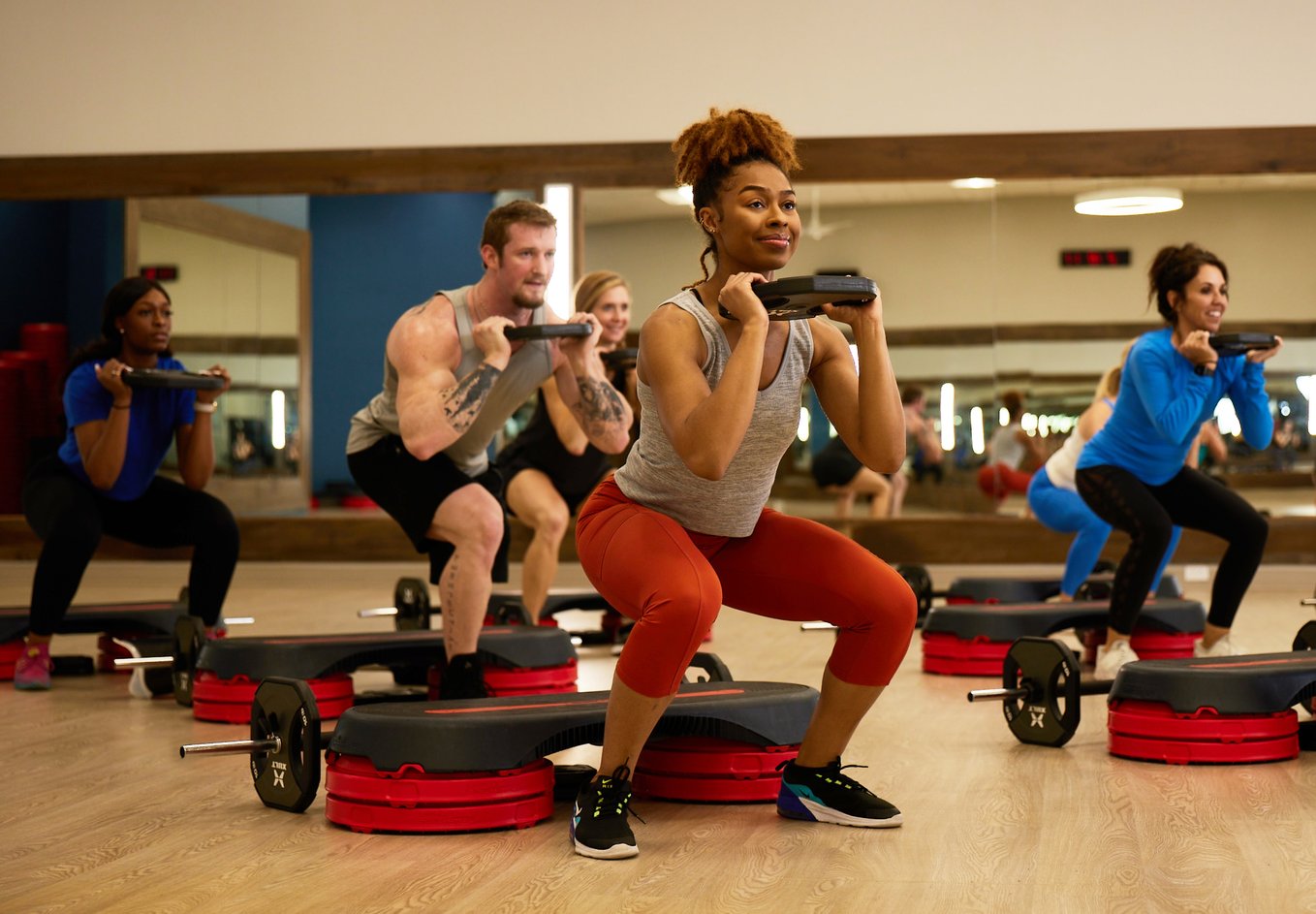Best HIIT Workouts for Maximum Results
Best HIIT Workouts for Maximum Results
Have you ever felt like running in circles with your fitness routine? Have you heard of High-Intensity Interval Training (HIIT) but still unsure what it is?
Well, imagine sprinting towards your goals on a fast track. That's HIIT for you - swift, intense, and powerful.
We'll dive into the nuts and bolts of this training powerhouse: its benefits and how it works wonders for weight loss and overall fitness. Then we'll get to the meaty part - 4 top-notch HIIT workouts designed to supercharge results!
Safety comes first, so we will discuss important precautions before getting started. Not forgetting nutrition because what goes inside powers us outside! Plus, some smart ways exist to adapt these routines across different fitness levels.
So buckle up, folks! This could be a real revolution.
Ready to work out? Get your FREE PASS from Onelife Fitness today!
Understanding High-Intensity Interval Training (HIIT)
High-intensity interval training, or HIIT as it's commonly known, is a type of workout that alternates between periods of intense exercise and recovery. But why has this form of fitness become so popular?
The secret lies in its efficiency. According to a study, HIIT workouts can burn up to 30% more calories than other forms of exercise. Plus, they don't require much time - perfect for busy folks who struggle to fit gym sessions into their schedule.
The Science Behind HIIT Training
HIIT works by pushing your upper body very hard during short bursts of activity, then allowing you some rest before starting the cycle again. This process challenges aerobic and anaerobic systems, improving cardiovascular health.
This style isn't just about heart health; it also impacts muscle growth and fat loss due to excess post-exercise oxygen consumption (EPOC). But, after an intense session like HIIT, your body needs more energy (calories) than usual while recovering – helping you continue burning fat even after leaving the gym.
Efficacy Compared To Traditional Cardio Exercises
If we compare traditional cardio exercises with HIIP using duration as our measure stick, one might think that longer-lasting activities should yield better results. Yet studies have shown otherwise. One research study found that people performing 20 minutes of high-intensity interval cycling burned significantly more calories than those doing 40 minutes of steady-state cycling.
It's not just about calories, though. HIIT cardio workouts can also boost your metabolism, making it more efficient at burning fat throughout the day – that's why many people see noticeable results in less time than traditional workout routines.
The Flexibility Of HIIT
What's truly fantastic about HIIT is how adaptable it can be. It can easily fit into any schedule, making it a perfect choice for anyone looking to boost their fitness.
Essential Elements of an Effective HIIT Workout

The success of a High-Intensity Interval Training (HIIT) workout hinges on three core components: intensity, duration, and recovery periods. Let's dive deeper into each element to understand better how they impact your results.
1. Intensity
Your lower body needs to work hard during the high-intensity intervals for HIIT workouts to be effective. According to the Mayo Clinic, it's not about casually jogging or doing leisurely squats; you should push yourself until you're out of breath and can't hold a conversation.
This level of exertion pushes your heart rate up, helping burn more calories both during cardio and after the workout – it's called the 'afterburn effect.'
2. Duration
You don't need hours at the gym for a productive HIIT session. In fact, most routines range from 10 minutes to half an hour long - this makes them ideal for those with tight schedules but still want serious fitness gains. Research suggests shorter bouts help keep intensity levels high throughout.
3. Recovery Periods
In between bursts of intense activity are recovery periods, which allow your body time to recuperate before diving back into another challenging round. This isn't just downtime; maintaining active movement helps keep elevated heart rates, boosting calorie burn even further. A study published in Medicine & Science in Sports & Exercise demonstrated that busy recovery periods help enhance the benefits of a HIIT exercise.
Incorporating these elements into your routine will ensure you get the most out of your sweat sessions, and remember: a little goes a long way with one HIIT workout.
Finding Your Sweet Spot
Remind yourself that no single solution works perfectly for every case.
Best HIIT Workouts for Maximum Results

If you're on the hunt for a workout that can ramp up your fitness, High-Intensity Interval Training (HIIT) might be your golden ticket. It's fast-paced and challenging, but most importantly - it delivers results. Let's jump right into the top four HIIT workouts that'll have you breaking a sweat and seeing progress in no time.
1. The Quickie: 10-Minute Full Body Burn
This is ideal when you're pressed for time but still want an effective workout. For this routine, cycle through 30 seconds of burpees, kettlebell swings, and mountain climbers with minimal rest between exercises. Repeat until your ten minutes are up.
2. The Sprinter: Track Attack Workout
No gym? No problem. Two training styles: The track attack focuses solely on sprints – alternating between high-speed sprinting and slower recovery jogs. This simple yet powerful routine builds speed and endurance and promotes fat burn thanks to its metabolic-boosting properties. Studies even show sprint interval training can improve insulin sensitivity more than traditional aerobic exercise.
3. The Power Player: Tabata Strength Circuit
Tabata training involves working at maximum intensity for 20 seconds and resting for 10 seconds - repeat eight times over four minutes. Our power circuit includes push-ups, squat jumps, tricep dips, and jumping lunges, perfect if strength building is part of your fitness goals.
4. The Ultimate Challenger: Insanity Max 30
You may know Insanity Max 30 from the fitness infomercials, but don't be fooled - this workout is no joke. The intense program includes high-speed plyometrics and bodyweight exercises that will test your limits. Stick with it; you'll have something to show off about your accomplishments.
Safety Measures and Precautions for HIIT
Safety is paramount when it comes to high-intensity interval training (HIIT). It's like driving a sports car: thrilling, but needs caution.
Warm Up and Cool Down
A proper warm-up before starting your HIIT workout is akin to revving up the engine of that sports car - it prepares your body for the strenuous journey ahead. Stretching increases blood flow, boosts oxygen supply, and loosens muscles. This ensures you're less likely to pull a muscle during an intense session.
The cool-down period after working out allows your heart rate and breathing to return to normal gradually. Think of this as safely parking your vehicle after reaching top speed on the highway.
Use Proper Form
No matter how fast or hard you go in a race, if you don't follow the rules - there will be penalties. The same applies when performing any exercise in a HIIT routine; maintaining correct form can help prevent injuries while ensuring maximum benefits from each movement.
To get familiar with exercises involved in various workouts such as burpees, jump squats, mountain climbers, etc., consider hiring a certified personal trainer or use trusted online resources like BodyBuilding.com.
Mind Your Body's Signals
Your body knows its limits better than anyone else–even more than those fancy fitness apps. So listen closely when it speaks through pain or discomfort during workouts – these are signs that something might be wrong. Don't push yourself too far. Instead, take it slow and gradually increase the intensity.
Hydrate and Refuel
A high-performance vehicle needs quality fuel; your body is no different. Stay hydrated throughout your next HIIT training session by sipping on water regularly - think of it as oiling your machine for smooth functioning.
After your HIIT session, refuel with a balanced meal to help you recover and build muscle - such as lean meats or plant-based proteins. This can help you recover and grow muscles. Aim to consume proteins that are either from lean meats or plant-based sources. Don't forget complex carbs; sweet potatoes or brown rice are great options.
The Best HIIT Workout for Different Fitness Levels

No matter where you're in your fitness journey, High-Intensity Interval Training (HIIT) can be adjusted to match your level. Let's explore how beginners, intermediate exercisers, and advanced athletes can modify lower-intensity exercises in these workouts for maximum results.
Beginners: Start Slow but Steady
For advanced athletes, starting cautiously and not overexerting oneself is essential; thus, one should commence with lower-intensity intervals. Instead of risking injury by pushing too hard from the start of basic interval training, begin with lower-intensity intervals. For example:
- Cycling Intervals: Cycle fast for 30 seconds, then slow down and cycle lightly for two minutes.
- Treadmill Walk/Run: Fast walk or jog gently for a minute, followed by three minutes of strolling.
- Squat-Jump Rests: Perform squat jumps as quickly as possible for 20 seconds; rest by standing still or doing light stretching exercises for one minute.
You might feel like this isn't enough - but trust us when we say that easing yourself into the world of HIIT is safer and more sustainable.
Moving Up: Intermediate Level Adjustments
If you've been exercising consistently and are ready to step up your game without going overboard, here are some modifications suitable for an intermediate level:
- Kettlebell Swings/Treadmill Sprints: Swap out moderate jogging on the treadmill with one minute of kettlebell swings followed by two minutes of sprinting.
- Box Jumps/Plank: Alternate between 30 seconds of box jumps and a one-minute plank for an intense yet manageable workout.
Your workouts depend largely on giving your body enough time to rest and recover. According to Harvard Health, it's crucial that you push yourself during your training sessions but also prioritize recovery periods.
Nutritional Considerations for HIIT
Before a HIIT session, giving your body the correct nourishment can significantly affect how you do and recuperate. Let's dive into what you should eat to fuel and cool down.
Pre-Workout Meals: Powering Your Performance
The foods you consume before exercising determine your performance during your HIIT session. Aim for a balanced mix of macronutrients – proteins, carbs, and fats.
A good pre-workout meal might include whole grains or fruits for quick energy from carbohydrates, lean protein like chicken or tofu for muscle repair, and healthy fats such as avocados or nuts to keep hunger at bay. The goal is to get long-lasting energy that won't leave you feeling sluggish mid-workout.
Hydration: Don't Sweat It.
During intense workouts like HIIT, your body loses significant amounts of water through sweat. Before working out, it's essential to drink enough water. A general rule is to drink about 500ml (17 ounces) two hours prior, according to this study published by Two PhDs. But remember, every individual's hydration needs differ depending on various factors, including climate conditions, workout intensity, etc., so adjust accordingly.
Post-Workout Recovery Nutrition:
You've pushed hard through those intervals; now it's time to give back some love. Post-HIIT nutrition is essential in replenishing depleted glycogen stores used during exercise while providing amino acids needed for muscle repair and growth.
After you've sweated it, eat a snack or shake packed with protein and high-glycemic carbs. It can be as easy as chocolate milk, Greek yogurt sweetened with honey, or a banana smoothie blended with a whey protein source.
Tracking Progress and Results from HIIT Workouts
To maximize your gains from High-Intensity Interval Training (HIIT), it's crucial to keep track of your progress. But how do you measure results? Here are some practical tips.
Use a Fitness Tracker
A fitness tracker is an excellent tool for keeping tabs on your workouts. These handy gadgets let you monitor heart rate, calories burned, steps taken, and more. Analyzing this data over time lets you see if your fitness level improves.
The real value comes when comparing stats between different HIIT exercises and sessions. For example, if it takes less time for your heart rate to return to normal after a workout compared to previous weeks or months - that's progress. It means your cardiovascular system is more efficient at recovering from intense exercise.
Maintain a Workout Journal
Paper might be old school, but nothing beats the simplicity of jotting down notes in a workout journal. Write down the details of each session – exercises performed, intensity levels reached during intervals, and rest periods between sets.
This will help create an accurate picture of what works best for you individually and which aspects need improvement over time. Studies show this practice increases accountability and motivation, too.
Evaluate Physical Changes
Sometimes, changes aren't just about numbers; they're about feeling stronger or seeing muscle definitions where they weren't before. Do your clothes fit differently? Are you more energetic throughout the day? These subjective changes are equally important indicators of progress.
Consider taking monthly photos or using a body composition scale for a more objective measure. A body composition scale can provide an in-depth view of how HIIT transforms your physique over time by measuring your body weight, fat percentage, and muscle mass.
Monitor Strength Gains
We can see strength gains. What could be causing these strength gains? Let's delve into it.
FAQs
What is the most effective form of HIIT workout?
The effectiveness of a HIIT workout hinges on your goals. Tabata training, however, shines in burning fat, losing body weight, and building cardiovascular endurance.
Is 20 minutes of HIIT per day enough?
Absolutely. A 20-minute daily dose can spark significant results. But remember, intensity beats duration when it comes to the best HIIT exercises.
How long will it take to see results from HIIT?
You might start noticing changes within two weeks. Consistency, though, is critical for visible transformations.
What type of HIIT is best for weight loss?
Treadmill sprints or cycle intervals are aces for shedding pounds because they crank up calorie burn during and after workouts.
Conclusion
HIIT workouts can be a game-changer, right? They're swift, intense, and decisive. We've dug into their benefits and how they work wonders for weight loss and overall fitness.
We also discussed the best HIIT workouts for maximum results - those top-notch routines that supercharge your fitness journey!
Remember safety first, though! Always take precautions to prevent injuries. And don't forget about nutrition; what you eat fuels your workout.
You can adapt these HIIT routines across different fitness levels. Keep tracking progress, too, because improvements boost motivation like nothing else!
If you're tired of running in circles with your usual routine, maybe it's time to sprint towards your goals on the fast track of HIIT!
Contact Onelife Fitness for your FREE PASS and all our gym classes across WV, DC, VA, MD, & GA. We look forward to helping you on your health and fitness journey!